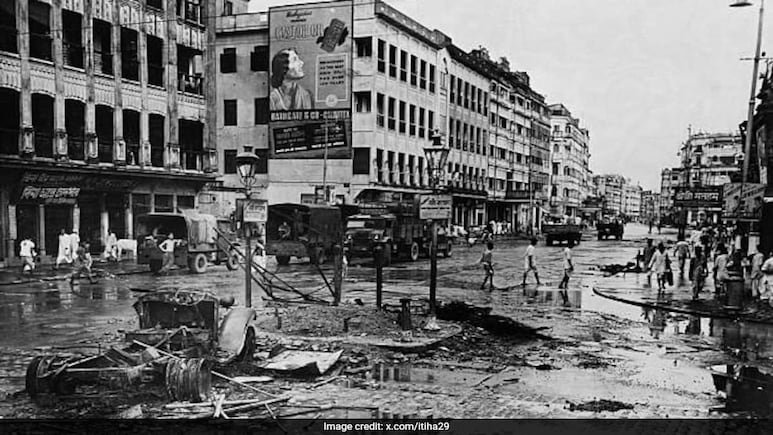
- Direct Action Day on 16 August 1946 led to brutal communal riots in Calcutta, Bengal
- Muslim League called the day to press for Pakistan, urging Muslims to suspend business
- Violence involved armed attacks by both communities, causing many deaths and injuries
The streets of Calcutta (now Kolkata) witnessed one of the bloodiest communal riots in India's pre-independence era. On August 16, 1946, a day now remembered as Direct Action Day or the Great Calcutta Killings, Bengal descended into days of brutal bloodshed, shattering hopes of unity and plunging the province into chaos.
The violence was the result of a volatile political atmosphere at the time.
Direct Action Day
Muhammad Ali Jinnah and the Muslim League, demanding a separate homeland for Muslims called Pakistan, declared August 16 as Direct Action Day. Their goal was to increase pressure on the British colonial rulers to concede to their demand for a religiously divided India. The call urged Muslims to suspend all business and show their collective strength.
Bengal was a particularly sensitive region. It had a Muslim majority but was also a hotbed of political rivalry, with a Hindu-dominated National Congress, the Communist Party of India, and the Hindu Mahasabha vying for influence.
The communal divide deepened further as notions of nationalism became entangled with religion. Indian identity began to be equated largely with Hinduism, and Muslims felt alienated.
The Great Calcutta Killings 1946
The morning of August 16 carried ominous sentiments. Voices like "Larke lenge Pakistan" (We'll fight to get Pakistan) and calls for brutal retaliation were heard.
The violence was savage and indiscriminate. Members of both communities, armed with swords, knives, cleavers, guns, and metal rods, murdered each other in cold blood. Scores of innocent people were killed, and many more were wounded. Hundreds of Muslims bore the brunt of the killings, but the brutality affected both sides.
Eyewitness accounts would later reveal the horrific nature of the violence. Gopal Pantha, a contested figure in history, recounted, "... if we heard one murder has taken place, we committed ten more... the ratio should be one to ten, that was the order to my boys," as per The Quint.
Another witness, Jugal Chandra Ghosh, described seeing four trucks loaded with dead bodies stacked three feet high, with blood and brains oozing out.
The Idea Of Pakistan
The roots of this violence trace back decades. The 1905 Partition of Bengal had already sown seeds of division by creating a Muslim-majority province, which sparked a joint Hindu-Muslim protest but also laid the foundation for communal politics. The formation of the Muslim League in 1906 further politicised religion, while continuous riots in Calcutta between 1918 and 1930 worsened tensions.
The idea of Pakistan took shape over decades before the Partition, beginning with the Muslim League's formation to protect Muslim political interests.
In 1930, Muhammad Iqbal proposed a self-governing Muslim-majority region, and in 1933, Cambridge student Choudhry Rahmat Ali coined the name "Pakistan" in his pamphlet 'Now or Never'. It was an acronym for -
Punjab
Afghania (NWFP)
Kashmir
Indus-Sindh
Balochistan.
The demand became a political goal with the Lahore Resolution of 1940, calling for independent Muslim-majority states, ultimately leading to the Partition in 1947.
The British government's Communal Award in 1932, which granted separate electorates to minorities, worsened divisions. Mahatma Gandhi opposed this move, fearing it would fracture Indian society irreparably.
In the 1946 provincial elections, the Muslim League secured 114 seats while the Congress got 86, cementing the call for Partition.
Track Latest News Live on NDTV.com and get news updates from India and around the world

